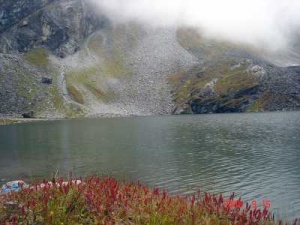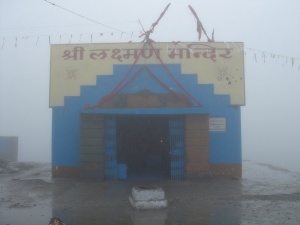Lokpal: Difference between revisions
No edit summary |
No edit summary |
||
| (2 intermediate revisions by one other user not shown) | |||
| Line 1: | Line 1: | ||
[[Image:lokpallake_0.jpg|thumb|right|300px|Lokpal Lake or Hemkund Lake]] | [[Image:lokpallake_0.jpg|thumb|right|300px|Lokpal Lake or Hemkund Lake]] | ||
'''Lokpal''' is the site | '''Lokpal''' is the name of the site present in Utarakhand in Chamoli district. Here [[Gurdwara Hemkunt Sahib]] is located. The name Hemkunt was given by Pandit Tara Singh Narotam (1884), [[Sohan Singh]] and [[Modan Singh]] (1933) who built the Gurdwara. According to these three men, Lokpal is the place where [[Guru Gobind Singh]] meditated in his previous carnation. Lokpal means protector of the world (from Sanskrit: '''lok''' meaning world and '''pal''' meaning protector). | ||
Sikhs believe that this holy place, known as Hemkunt (lake of ice/lit. cut in the snow), is the tap asthan (place of meditation and prayer) at which the tenth and final living Guru of the Sikhs achieved union with God in his previous incarnation. | |||
Their is also a ''Mandir'' (temple) dedicated to Lakshman (also known as Lokpal Temple), located on the lake. Lakshman (Sanskrit: लकढ़षढ़मण) was the younger brother of and close companion of Rama, both were heroes in the ''Ramayana''. | |||
It is believed that Lakshman had meditated at this place and that the four magical herbs that made up the mythical ''Sanjeevani Buti'' that cured Lakshman after Meghnad (Indrajit) had wounded him during the epic battle to free Sita from Ravanna in Lanka (Sri Lanka), are said to have been found in the vicinity. In the Valmiki ''Ramayana'' the ''Vanara'' ''Hanuman'' leaped from Sri Lanka across the whole of ''Bharata varsham'' (India) to this spot in the Himalayas to retrieve the ''Sanjeevani Buti''. | |||
Because of this, the Lakshman Temple is considered as one of the 68 most important Hindu pilgrimage sites. There is no temple dedicated to the Pandavas at the site. | |||
[[File:lokpallake_1.jpg|thumb|right|300px|Laxman(Ram's Brother) Temple at Lokpal]] | [[File:lokpallake_1.jpg|thumb|right|300px|Laxman(Ram's Brother) Temple at Lokpal]] | ||
Latest revision as of 09:27, 21 March 2010
Lokpal is the name of the site present in Utarakhand in Chamoli district. Here Gurdwara Hemkunt Sahib is located. The name Hemkunt was given by Pandit Tara Singh Narotam (1884), Sohan Singh and Modan Singh (1933) who built the Gurdwara. According to these three men, Lokpal is the place where Guru Gobind Singh meditated in his previous carnation. Lokpal means protector of the world (from Sanskrit: lok meaning world and pal meaning protector).
Sikhs believe that this holy place, known as Hemkunt (lake of ice/lit. cut in the snow), is the tap asthan (place of meditation and prayer) at which the tenth and final living Guru of the Sikhs achieved union with God in his previous incarnation.
Their is also a Mandir (temple) dedicated to Lakshman (also known as Lokpal Temple), located on the lake. Lakshman (Sanskrit: लकढ़षढ़मण) was the younger brother of and close companion of Rama, both were heroes in the Ramayana.
It is believed that Lakshman had meditated at this place and that the four magical herbs that made up the mythical Sanjeevani Buti that cured Lakshman after Meghnad (Indrajit) had wounded him during the epic battle to free Sita from Ravanna in Lanka (Sri Lanka), are said to have been found in the vicinity. In the Valmiki Ramayana the Vanara Hanuman leaped from Sri Lanka across the whole of Bharata varsham (India) to this spot in the Himalayas to retrieve the Sanjeevani Buti.
Because of this, the Lakshman Temple is considered as one of the 68 most important Hindu pilgrimage sites. There is no temple dedicated to the Pandavas at the site.


